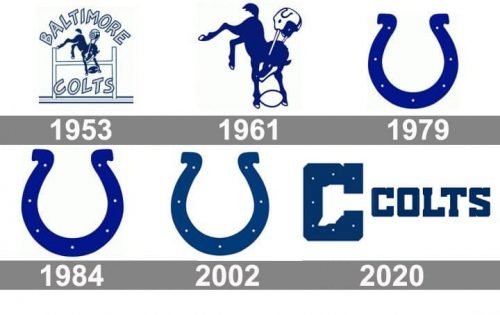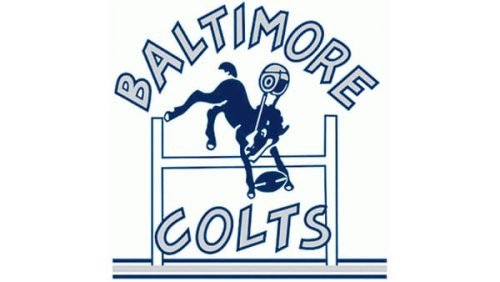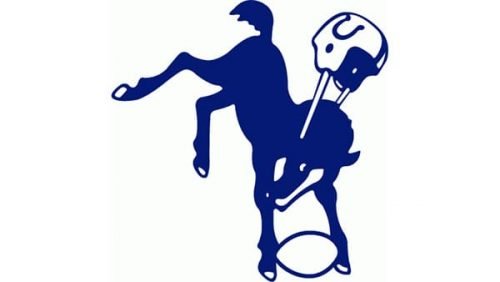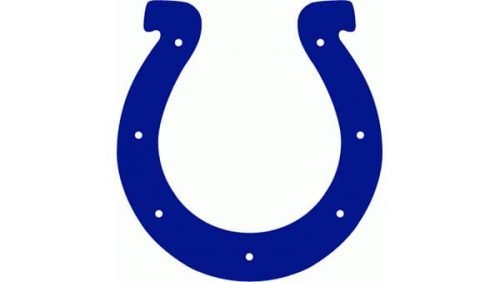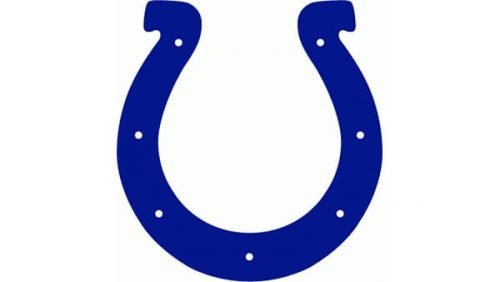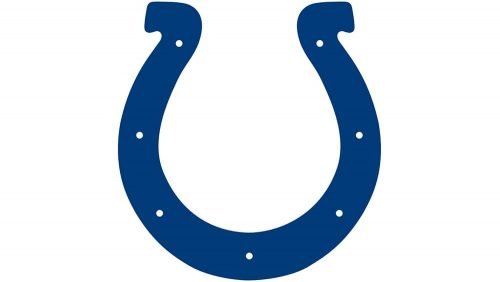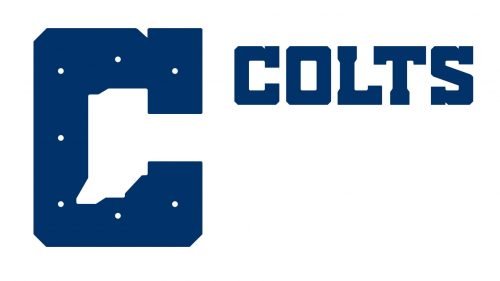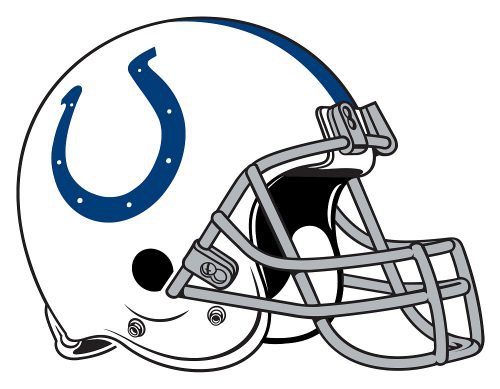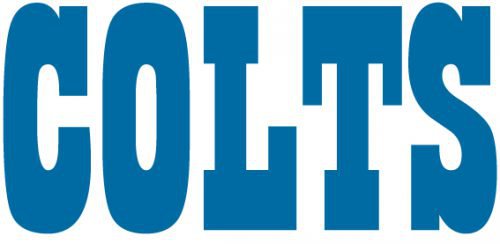Indianapolis Colts is the name of the professional rugby club, which was established in 1953 in Indiana. The team is a member of the NFL and has numerous rewards in championships. The club is owned by Jim Irsay and has Frank Reich as the head coach.
Meaning and history
The famous American football team is very constant with their visual identity. The main theme was settled in 1953, while the emblem, which is used by the team today, was designed in 1979 and only slightly refined during the years.
The color palette of the logo has also been stable — blue and white combination perfectly reflects such qualities as professionalism, reliability, and loyalty of the team to their fans and football.
1953 — 1960
The very first logo for the famous football team was designed in 1953 and depicted a jumping horse, wearing a football helmet and holding a rugby ball. The “Baltimore Colts” wordmark was executed in white with a blue outline and placed above and under the horse image.
The “Baltimore” part in all capitals was arched, while the “Colts”, also in all-caps, was written horizontally. There was also a white obstacle with a blue outline, balancing the lettering and the solid blue horse.
1961 — 1978
The logo was first redesigned in 1961. The horse, helmet and the football remained untouched, though all the other details were removed. Another important element of the new logo was an image of the horseshoe on the white helmet. This is how the iconic symbol was born.
1979 — 1983
The legendary blue horseshoe with seven white grommets was introduced in 1979. A symbol of luck and hope, it was executed in the signature color palette of the football club, reflecting their value of roots and traditions and representing professionalism and stability.
Baltimore, the city where Colts was born, is known for horse racing and everything connected to these amazing animals, so, actually, the team had not a big choice of animalistic themes to choose from. But the horseshoe became a truly iconic symbol and stayed with the club even after it moved to Indianapolis.
1984 — 2001
The contours of the horseshoe were refined, but nothing was really changed. The team also creates an additional logotype, used as the secondary insignia. It is a bold blue inscription in all capitals, executed in a wild-west style serif typeface, with smooth thick lines.
2002 — Today
The redesign of 2002 only brought a new shade of blue to the visual identity of the famous football team. The blue became darker and calmer, now the logo looks as exquisite and confident as never before. The white grommets are slightly enlarged and are more distinct now.
2020 — Today
The team renews its visual identity in 2020. The horseshoe is still there, without any changes, but there are two additional logos, designed to celebrate the powerful and winning team.
The first one is an emblem, which is composed of a bold blue letter “C” with seven white grommets, resembling the iconic insignia. The inner contour of the letter repeats the contour of the Indiana state. This tribute to the team’s roots is a modern and strong patriotic sign.
Another change was made to the logotype. The “Colts” inscription in all capitals is now written in a custom serif typeface with unique lines, which make it stand out from all the other teams, reflecting the individual character of the team and its players.
Symbol
The horseshoe symbol has firmly established itself as a Colts logo, and it pretty much reflects the team’s never-flagging and almost animalistic perseverance and infinite determination to win.
Emblem
The emblem goes back to the times when the team was based in Baltimore – a city, which boasts rich horse racing traditions.
Shape
The horseshoe logo has been around since 1979. Today, it is a blue horseshoe with seven white holes. Since its inception it has not changed much.
Font
The Colts wordmark uses the Playbill BT Regular font, and it is written in blue uppercase capitals.
Colors
The Colts logo colors include blue and a tiny bit of white. Blue symbolizes excellence, persistence, and power; white stands for purity and charm.
SPEED BLUE
HEX COLOR: #002C5F;
RGB: (0, 44, 95)
CMYK: (100, 85, 30, 16)
PANTONE: PMS REFLEX BLUE C
TEXTILE: PMS 19-3955 TCX
GRAY
PANTONE: PMS 429 C
HEX COLOR: #A2AAAD;
RGB: (162, 170, 173)
CMYK: (38, 27, 27, 0)
Why is the Indianapolis Colts logo a horseshoe?
The horseshoe is a commonly known symbol of good luck, when it’s placed with its ends up. This sign was first used on the Indianapolis Colts badge in 1961, being drawn on the white helmet, and became the only element of the club’s visual identity in 1979. Today the horseshoe can be read in the shape of the stylized letter “C” on the emblem.
Did the Colts change their logo?
Yes, Indianapolis Colts have changed their logo several times throughout the years, with its original badge, created in 1953, changed in 1961, and then in 1979. It was when the iconic hot shoe badge was introduced. It was later refined several times, until the current version of the club’s badge was designed in 2020. The completely new concept was meant to show the grown and evolution of the team.
What color is the Indianapolis Colts uniform?
The official colors of the Indianapolis Colts club are blue and white, and they’re are used both in the logo of the club, and in their uniforms. Hence, the players of the Colts’ team can be seen in blue and white jerseys, with the colors alternating.
What is the Indianapolis Colts named after?
The “Colts” part of the club’s name was inherited by them from the Baltimore Colts, the original club, established in Baltimore in the beginning of the 1950s. This was given to the club as a celebration of the local horse breeding tradition and the long-lasting history of the state.


